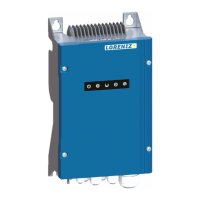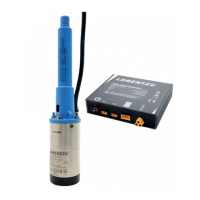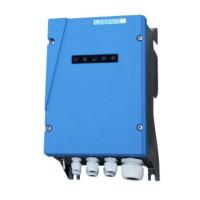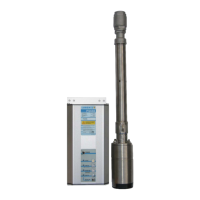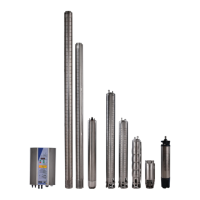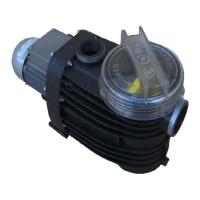Static Water Level - Depth to the water surface in a
well under static conditions (not being pumped). May be
subject to seasonal changes or lowering due to depletion.
Wellhead - Top of the well.
Pump System Engineering
Friction Loss - The loss of pressure due to flow of water
in pipe. This is determined by 4 factors: pipe size (inside
diameter), pipe material, flow rate, and length of pipe. It
is determined by consulting a friction loss chart available
in an engineering reference book or from a pipe supplier.
It is expressed in PSI or Feet (equivalent additional feet
of pumping). Pipe fittings, especially 90° elbows, impose
additional friction.
Head - See synonym: vertical lift.
Suction Lift - Applied to surface pumps: Vertical
distance from the surface of the water in the source, to a
pump located above the surface. This distance is limited by
physics to around 20 ft at sea level (subtract 1 ft per 1,000
ft altitude) and should be minimized for best results.
Submergence - Applied to submersible pumps: Distance
below the static water level, at which a pump is set.
Total Dynamic Head - vertical lift + friction loss in pip-
ing (see vertical lift and friction loss).
Vertical Lift - The vertical distance that water is pumped.
This determines the pressure that the pump pushes against.
Total vertical lift = vertical lift from surface of water source
up to the discharge in the tank + (in a pressure system)
discharge pressure. Synonym: static head. Note: Hori-
zontal distance does NOT add to the vertical lift, except in
terms of pipe friction loss. NOR does the volume (weight)
of water contained in pipe or tank. Submergence of the
pump does NOT add to the vertical lift. See total dynamic
head.
Water Distribution
Cut-In Pressure and Cut-Out Pressure - See pressure
switch.
Gravity Flow - The use of gravity to produce pressure
and water flow. A storage tank is elevated above the point
of use, so that water will flow with no further pumping re-
quired. A booster pump may be used to increase pressure.
2.31 ft vertical = 1 PSI. 10 m vertical = 1 bar. See pressure
Head - Seevertical lift and total dynamic head. In water
distribution, synonym: vertical drop. See pressure.
Open Discharge - The filling of a water vessel that is not
sealed to hold pressure. Examples: storage (holding) tank,
pond, flood irrigation. Contrast: pressure tank.
Pressure - The amount of force applied by water that
is either forced by a pump, or by the gravity. Measured in
pounds per square inch (PSI) or bar (atmospheres). PSI
= vertical lift (or drop) in Feet/2.31. Metric: 1 bar = vertical
lift (or drop) of 10 m vertical.
Pressure Switch - An electrical switch actuated by the
pressure in a pressure tank. When the pressure drops to a
low set-point (cut-in) it turns a pump on. At a high point
(cut-out) it turns the pump off.
Pressure Tank - A fully enclosed tank with an air space
inside. As water is forced in, the air compresses. The
stored water may be released after the pump has stopped.
Most pressure tanks contain a rubber bladder to capture
the air. If so, synonym: captive air tank.
Pressure Tank Precharge - The pressure of compressed
air stored in a captive air pressure tank. A reading should
be taken with an air pressure gauge (tire gauge) with water
pressure at zero. The air pressure is then adjusted to about
3 PSI lower than the cut-in pressure (see Pressure Switch).
If precharge is not set properly, the tank will not work
to full capacity, and the pump will cycle on and off more
frequently.
For permission to reproduce and distribute Glossary of Solar
Electricity and Water Pumping, please contact Dankoff Solar
Products. Citation of the source and copyright is required.
Copyright © 1997-2005 by Dankoff Solar Products, Inc.
All rights reserved
Calculating Pumping Efficiency and Power 12.11
Requirement
This formula lets you calculate the wire-to-water energy
efficiency of any electric pumping system:
US:
efficiency [%] =
vertical lift [ft] × flow rate [GPM] × 18.8
diveded by power [W]
metric:
efficiency [%] =
vertical lift [m] × flow rate [litres/min] × 16
diveded by Power [W]
To estimate power requirement for any proposed pumping
job:
US:
power [W] =
vertical lift [ft] × flow rate [GPM] × 18.8
diveded by pump efficiency [%]
metric:
power [W] =
vertical lift [m] × flow rate [litres/min] × 16
diveded by pump efficiency [%]
The average efficiency for AC eletric pumps is ~ 35 %, solar
pumps range 40-60 %.
